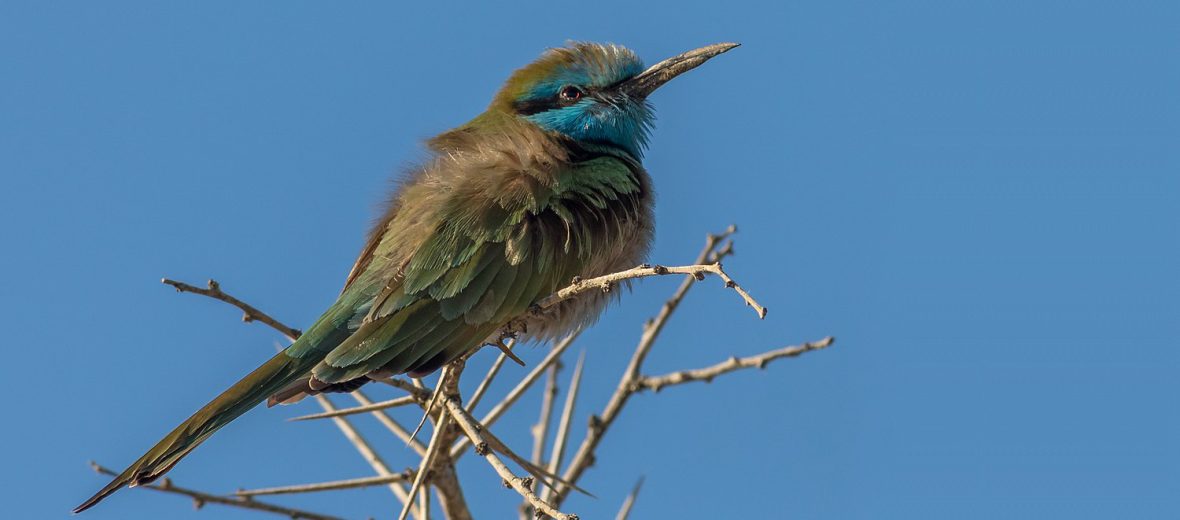
The Arabian green bee-eater, aka little green bee-eater or green bee-eater, can be found throughout Egypt, Israel, Jordan, Oman, Palestine, Saudi Arabia, United Arab Emirates, and Yemen. These beautiful birds can be grouped into 3 subspecies: Asian green bee-eater, African green bee-eater, and of course the Arabian green bee-eater. They prefer wooded habitats with a smattering of shrubs and trees, arid regions with date palms and acacias, gardens, cultivated lands, and dunes. With no real looming threats, sans habitat destruction and the steady decline of bees, these birds are listed as Least Concern by the IUCN. Their populations are also increasing. This article is on special request from Mithushan.
First the Stats…
Scientific name: Merops cyanophrys
Weight: Up to .88 ounce
Length: Up to 9 inches
Wingspan: Up to 19.3 inches
Lifespan: Up to 18 years
Now on to the Facts!
1.) Arabian green bee-eaters are considered gregarious in that they are often found in groups of up to 300 individuals, nesting in close proximity of 1 another.
2.) They take frequent dust baths, kind of like a chinchilla does. This is meant to reduce the oil content in their feathers and help in removing parasites.
3.) Foraging takes place with small groups of up to 20 birds.
4.) Bees, numerous bugs, a variety of beetles, termites, butterflies, moths, various flies, crickets, dragonflies, caterpillars, and spiders are all on the menu.
5.) These critters are often seen perched on the backs of antelope or grazing cattle, picking off parasites and flies throughout the day.
But wait, there’s more on the Arabian green bee-eater!
6.) An interesting behavior of these birds is that when an insect is caught, they will bang it against a hard surface several times to remove stingers and dirt, before eating their prey.
7.) Thought to be monogamous (mate for life) these birds will choose a partner and stay with them till 1 of them dies. At which time, they will search for a new partner.
Did you know…?
These birds exhibit theory of mind awareness. This is demonstrated by the fact that when a predator eyes their nest, the adults will not go near the nest until the predator no longer shows interest in said nest. This proves that these birds are aware of the mental state of the potential predator. This is a behavior typically only seen in primates and humans.
8.) The nest is located on the ground.
9.) Females lay up to 8 eggs that hatch in up to 22 days.
10.) Both parents participate in feeding and rearing their young.
But wait, there’s still more on the Arabian green bee-eater!
11.) The art of catching, disarming, and eating their prey is innate. They are born with the knowledge.
12.) These birds will often follow combines and other farm plowing equipment as they stir up tasty insects and their grubs for an easy meal.
13.) Bee-eaters are diurnal (active during the day).
Now a Short Arabian Green Bee-Eater Video!
This video talks about bee-eaters in general.
Be sure to share & comment below! Also, check out the Critter Science YouTube channel. Videos added regularly!
Want to suggest a critter for me to write about? Let me know here.
Photo credit: מינוזיג – MinoZig



